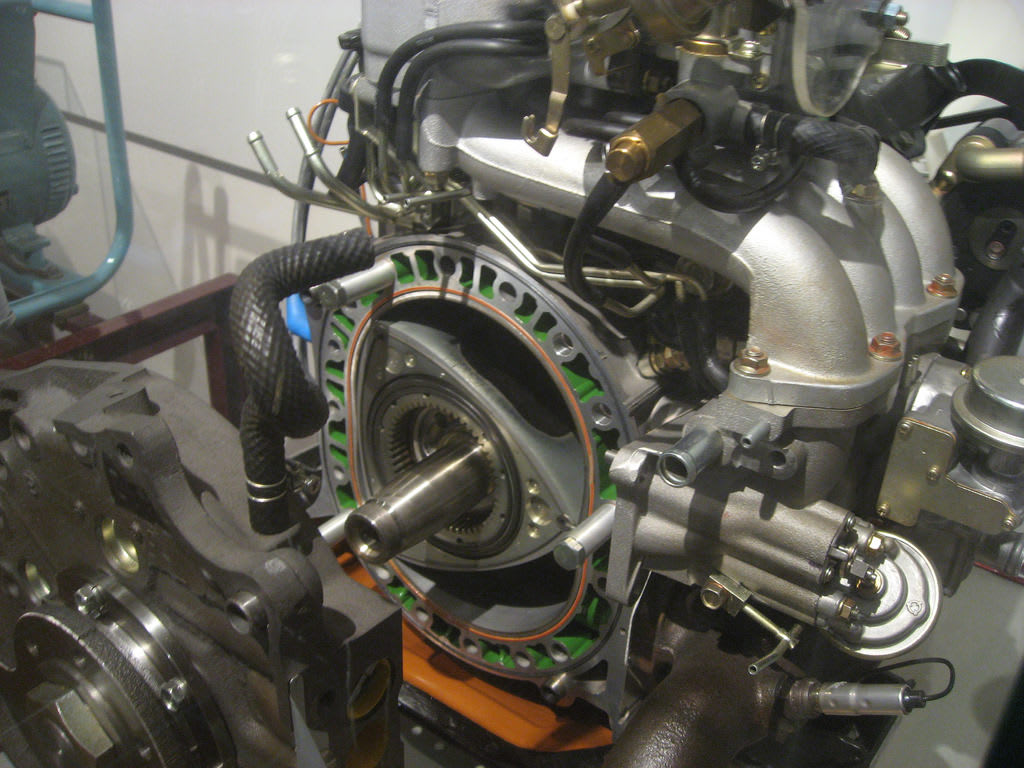

Most cars you see on the road have a traditional piston engine under the hood. However, a small amount have a distinct difference: they use a pistonless rotary engine or rotor engine. Instead of the cylindrical pistons found in the majority of engines, they use three-sided rotors in an oblong housing to create combustion.
What is a Rotary Engine?
The rotary engine that most American consumers are familiar with is also referred to as the Wankel engine, named after German engineer Felix Wankel, who designed this configuration in the 1960’s. Some brands embraced the rotary configuration due to the design's reputation for creating impressive horsepower from small displacement. Due to their light weight and compact size, the power to weight ratio is among the best of internal combustion engines.
Although it is an internal combustion engine, it works much differently than traditional piston engines. In a typical piston engine, each stroke completes four different jobs: intake, compression, combustion, and exhaust. Rotary engines accomplish the same four jobs, however they are completed in an individual sector of the engine housing. Essentially, it’s a more efficient way of completing the four-stroke process; similar to having a dedicated cylinder inside one chamber.
Fewer parts that move
A rotor engine doesn’t have nearly as many moving components as a piston engine. In a typical combustion engine, there are more than 40 individual components – such as the connecting rods, camshaft, valves, rockers, timing belt, timing gears, crankshaft and of course, the pistons – that must all work together for the four-stroke cycle to complete one revolution.
On the other hand, in a typical two-rotor rotary engine there are only three moving parts. Two of them are the rotors with the third being the output shaft. There's no valvetrain like what's found in a piston engine. A rotor traps the air/fuel mixture as it spins past the inlet port, then compresses it as it spins past the combustion area, and lets the burnt mix exit as it spins past the exhaust port, before starting the cycle again. A benefit of having fewer moving parts is that there are less parts to wear out, lighter weight, and not requiring oil changes.
Smoother motion
Parts in a traditional piston engine change directions as they rotate, while those in a rotary engine continually move in the same direction. They also feature counterweights that eliminate vibrations which occur in piston engines.
This helps make a rotor engine smoother than a piston one. It has three revolutions on the output shaft for one revolution of the rotor. For a piston engine, combustion happens on every two revolutions and a quarter of each crankshaft revolution. The rotors on the rotary engine move more slowly than on a piston engine, another factor that improves longevity.
Noted Issues
One of the negative side-effects of the rotary engine is the actual combustion process. While the engines themselves operate more efficiently in terms of power creation, fuel efficiency is not as good. In fact, the typical piston driven combustion engine burns approximately 80 percent of the air/fuel mixture in the combustion chamber, while the rotary engine typically only burns 70 percent. Additionally, issues with maintaining tight seals make rotary engines prone to oil consumption. These factors make them less fuel efficient and more polluting.
What's more, while rotary engines create a lot of power at high RPMs, they don't produce as much torque as piston engines, especially at low RPMs. This makes them a good option for a race track, but less ideal for everyday around-town driving.
Rotary engines are not found in many vehicles, especially those in the US, because of emissions regulations and reliability concerns. However, Japanese automaker Mazda has had found some success with the Wankel engine. Their four-rotor 787 race car won the prestigious 24 Hours of Le Mans race in 1991, and sports cars like the RX-7 and RX-8 have earned a cult following among car lovers. Despite this, Mazda hasn't produced a rotary engine since 2012. While the company claims they remain dedicated to researching and improving rotary engines, with today's ever-tightening emissions regulations, it seems unlikely they'll make a return. Auto enthusiasts can only hope to feel the smooth-spinning, high-revving power in a new rotary-powered car someday in the future.



